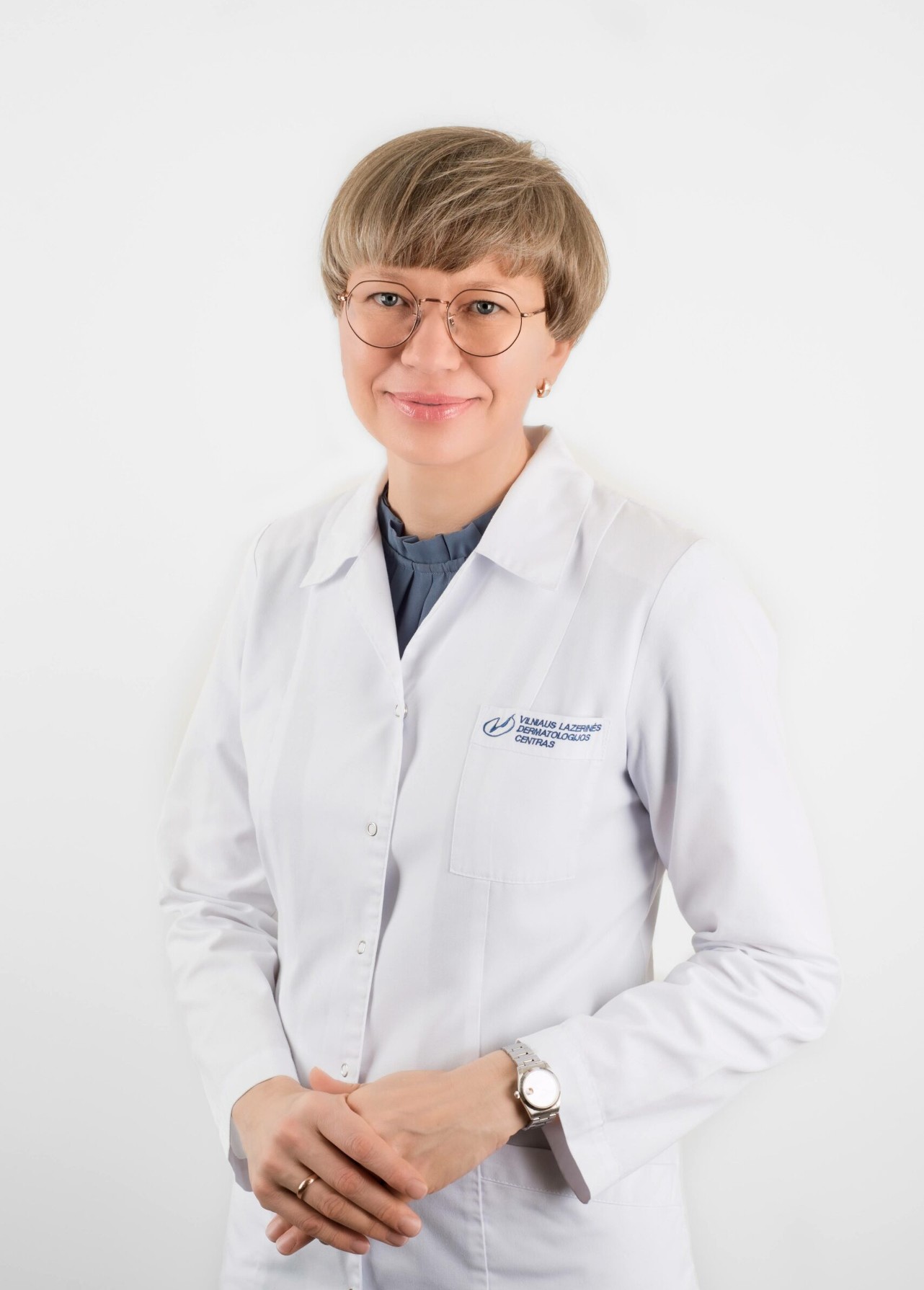Each of us has innate and acquired moles.
Congenital moles are present from birth, although some types occur within the first year. Congenital moles are the accumulation of melanocytes in the skin. Their size may vary from a few millimeters to giant ones.
Acquired moles are small (about 1 cm) pigmented spots or nodules (papules) with clearly seen borderlines, consisting of accumulations of melanocytes in the skin. Usually, they occur in childhood, reaching the peak in adolescence; later the involution begins and they start disappearing after 60 years of age.
Depending on the localization of pigmented cells (melanocytes), moles are divided into junctional, compound and dermal.
Junctional moles are the type of moles featuring pigmented spots; melanocytes localize at the basal membrane (basal membrane is a kind of the boundary between the epidermis and dermis).
Compound moles are pigmented formations raised on the skin; melanocytes are above and under the basal membrane.
Dermal moles are of light brown or body color raised on the skin formations; melanocytes are found only in the dermis.
Atypical moles (Dysplastic Nevi) may be divided into a separate category.
Atypical moles are moles featuring cytologic and architectonic atypia properties. Atypical moles are in a pre-cancerous condition. This does not mean that such moles will necessarily become malignant, but the risk is higher, compared to usual mole types.
Mole removal
Depending on the type of moles, there are different methods to remove them. The first thing a dermatologist has to do is to examine moles and decide on the removal method after assessing their condition. If moles do not show any signs of change, their removal is not necessary from the health perspective. A doctor must inform a patient about this.
If atypical moles are visible and the doctor has assessed the changes, he/she may recommend surgical treatment together with performance of histological mole examination. Other methods (laser removal, electro destruction) of removing atypical moles are not advisable to employ since there is risk to fail to diagnose melanoma, provided that histological examination is not performed, because the boundary between atypical mole and melanoma is very frail at times.
If the mole does not have atypia and the patient wants to remove it only because of cosmetic reasons, the decision about the most suitable method in this case is made individually. Usually the laser method is preferred as it delivers the best results in terms of cosmetics. What is more, the mole removal does not last long. In addition, it shows faster healing and diminishes risks of side effects of the procedure. Furthermore, surgical treatment may be recommended in case when the probability of mole recrudescence (recurrence of the mole) is high after applying laser removal.
FREQUENTLY ASKED QUESTIONS ABOUT MOLES
- Does a certain number of moles increase the risk of developing melanoma?
Yes, the number of moles is one of the main criteria, which indicates that a person has a higher risk of catching melanoma. The significant number of moles exceeds 50 units. It doesn’t matter whether the mole is raised or has the shape of a spot – every mole (even the smallest) is counted. - Is it safe to remove moles?
None of medical interventions can cause mole malignancy. Due to some myths, people often avoid performing their checkups by a dermatologist; therefore, the treatment is not started on time. - What kind of moles are dangerous?
Dangerous are those moles that undergo changes. If you notice a mole changing its shape, size, color, or there is a new, rapidly growing and changing mole, it is necessary to consult a dermatologist as this may be dangerous to Your health and life. - Can laser mole removal leave a scar?
Each case is individual. One person has a higher risk of scarring, while the other – does not. Since our center uses the latest and most advanced methods in mole removal, the risk of scarring is about 6%. - How often should I have dermatologist checkups?
If a dermatologist does not notice any altered moles during a checkup and there are no other risk factors, it is enough to go for the checkup once a year. If a person belongs to a high risk group, then the checkup has to be carried out every 4 or 6 months. - How long does the laser mole removal procedure last?
It depends on the localization of the mole, its size and complexity of the procedure (different moles require different removal approaches). Usually, the procedure lasts around 10-15 minutes.






